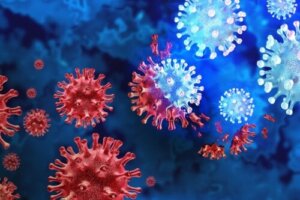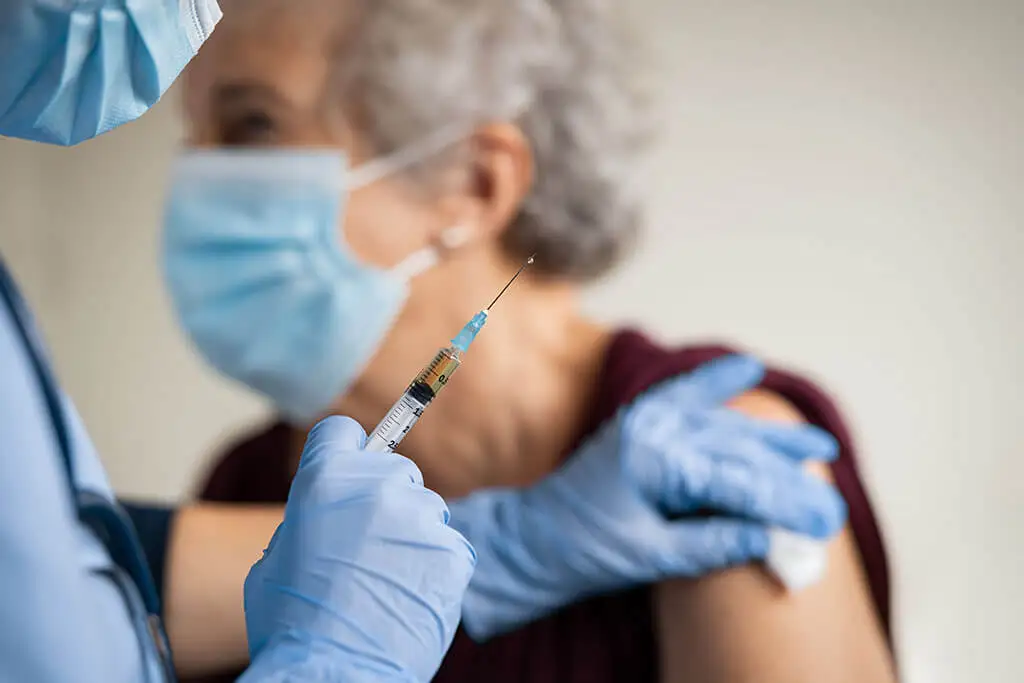XBB.1.5 or Kraken: The Most Contagious COVID-19 Variant


Written and verified by the doctor Leonardo Biolatto
The appearance of a new variant of COVID-19 is always in the news since 2020, as is the case with the latest one, christened kraken. However, its official name is XBB.1.5.
We owe the nickname kraken to Ryan Gregory. This biologist from Canada usually explains difficult science through his social networks, using allegories and expressions that are friendly to the general public. Thus, he decided that XBB.1.5 was too complicated and it was convenient to spread the information with a metaphor.
The problem, perhaps, is that the metaphor may arouse excessive and unnecessary fear. The kraken is a sea monster from Norse mythology; its form as an octopus or giant squid made it the terror of those who embarked to sail unknown waters.
Although the World Health Organization (WHO) calls it the most contagious variant of COVID-19 to date, the same is not true of its lethality. In other words, this is a more transmissible but much less aggressive form of the virus.
This is the most transmissible variant detected so far. The jump in infections that XBB.1.5 has had has been sharp and upward. -Maria Van Kerkhove, WHO epidemiologist
Why do we say that kraken is a variant of COVID-19?
Sometimes it’s difficult to understand or imagine what a variant of a virus is. We hear the concept in the news, but we can’t figure out why there is this differential classification of the agents that make us sick.
What happens is that viruses, when transmitted between hosts, modify themselves. In other words, as they replicate and multiply to survive and pass from one person to another, SARS-CoV-2 (the COVID-19 virus) changed.
As they mutate, the new viral copies may be different from those that gave rise to them. So, scientifically, it’s said that there is a variant.
This is not a completely different virus from the previous one that gave rise to it, but it’s not quite the same, either.
The variants that followed COVID-19, from 2020 until now, explain much of the behavior of the disease. Some mutations were more contagious, others caused some particular symptoms, there were also those that generated reinfections and those that had lower or higher susceptibility to the vaccines applied.

Is kraken the same as omicron?
To simplify the information, it is common to hear and say that kraken is a variant of COVID-19, just like that. Strictly speaking, XBB.1.5 is a lineage of omicron.
What happened is that, after the appearance of omicron, different mutations followed and were given names in the form of acronyms and numbers. The fusion of two of these mutations gave rise to the XBB lineage. After mutating twice, we arrived at XBB.1.5 which, according to projections, will be the sublineage that will prevail in the world in the short term.
It’s worth clarifying that the PCR test performed to diagnose COVID-19 infection does not distinguish between the subvariants and lineages of omicron. The genetic differences are so small that the technique fails to differentiate between them.
Get to know more: The 13 Most Dangerous Viruses for Humans
What does kraken look like?
Kraken is the last known variant of COVID-19. In statistical terms, it has the following characteristics:
- It’s the most contagious variant of them all, since it has a higher affinity for certain receptors in human cells.
- It’s not clearly prevalent in many countries, although it is prevalent in the United States. In Europe there are few and isolated cases; it’s expected to have an upward progression, though.
- It isn’t the most lethal varient. This variant did not cause an increase in hospitalizations in intensive care units or a higher proportion of deaths.
Read more here: Silent Pneumonia and Coronavirus
The symptoms of the new COVID-19 variant
Among the omicron subvariants there does not appear to be a notable difference in the symptoms they cause. Moreover, in populations with a high vaccination rate, most of those infected are expected to have only a cold-like clinical picture.
The omicron variant of COVID-19 has always been characterized by three predominant symptoms:
- Rhinorrhea or clear fluid discharge from the nose
- Headaches
- Fatigue
Recurrent sneezing and a sore throat were the other most frequent signs reported by patients.
Although a fever, cough, and a loss of taste were still listed as symptoms of the disease after the emergence of omicron, they weren’t as relevant at this stage of the pandemic. Nevertheless, they continue to be signs to watch out for.
In Europe, 89% of patients infected with any lineage of the omicron variant had moderate or mild symptoms between 2021 and 2022. This corresponds to what the spread of XBB.1.5 is expected to be – with the majority of cases without any severe symptoms.

What should we do about the most contagious variant of COVID-19?
Scientists announced last year that more COVID-19 variants would emerge, mainly because of countries with low rates of vaccination.
According to the report prepared by the authors of the statement in question, the lack of uniformity in the distribution of doses accelerates the genetic mutation of the virus. People with incomplete schedules would be able to favor the change in SARS-CoV-2, facilitating the spread of strains, variants, and lineages with small differences between them.
That is why vaccination is still emphasized:
It’s not known if the vaccines are useful for kraken, so it’s best to continue recommending the fourth dose. -Rafael Bengoa Rentería, former Minister of Health of the Basque Country
Overall, there’s no need to fear and we must understand that the new variants seem less aggressive. However, the high contagiousness increases the susceptibility of those people who were always more at risk during the pandemic: this includes older adults, chronically ill, or immunocompromised patients. In these groups, it’s always best to take extreme precautions.
All cited sources were thoroughly reviewed by our team to ensure their quality, reliability, currency, and validity. The bibliography of this article was considered reliable and of academic or scientific accuracy.
- Callaway, E. (2023). Coronavirus variant XBB. 1.5 rises in the United States-is it a global threat?. Nature, 613(7943), 222-223.
- Davis-Gardner, M. E., Lai, L., Wali, B., Samaha, H., Solis, D., Lee, M., … & Suthar, M. S. (2022). Neutralization against BA. 2.75. 2, BQ. 1.1, and XBB from mRNA Bivalent Booster. New England Journal of Medicine.
- Iacobucci, G. (2021). Covid-19: Runny nose, headache, and fatigue are commonest symptoms of omicron, early data show.
- Maisa, A., Spaccaferri, G., Fournier, L., Schaeffer, J., Deniau, J., Rolland, P., … & Yazdanpanah, Y. (2022). First cases of Omicron in France are exhibiting mild symptoms, November 2021–January 2022. Infectious Diseases Now.
- Oehler, R. L., & Vega, V. R. (2022). Worldwide vaccine inequality threatens to unleash the next COVID-19 variant. International Journal of Infectious Diseases, 123, 133-135.
- Tallei, T. E., Alhumaid, S., AlMusa, Z., Kusumawaty, D., Alynbiawi, A., Alshukairi, A. N., & Rabaan, A. A. (2022). Update on the omicron sub‐variants BA. 4 and BA. 5. Reviews in Medical Virology, e2391.
- Yue, C., Song, W., Wang, L., Jian, F., Chen, X., Gao, F., … & Cao, Y. R. (2023). Enhanced transmissibility of XBB. 1.5 is contributed by both strong ACE2 binding and antibody evasion. bioRxiv.
This text is provided for informational purposes only and does not replace consultation with a professional. If in doubt, consult your specialist.








